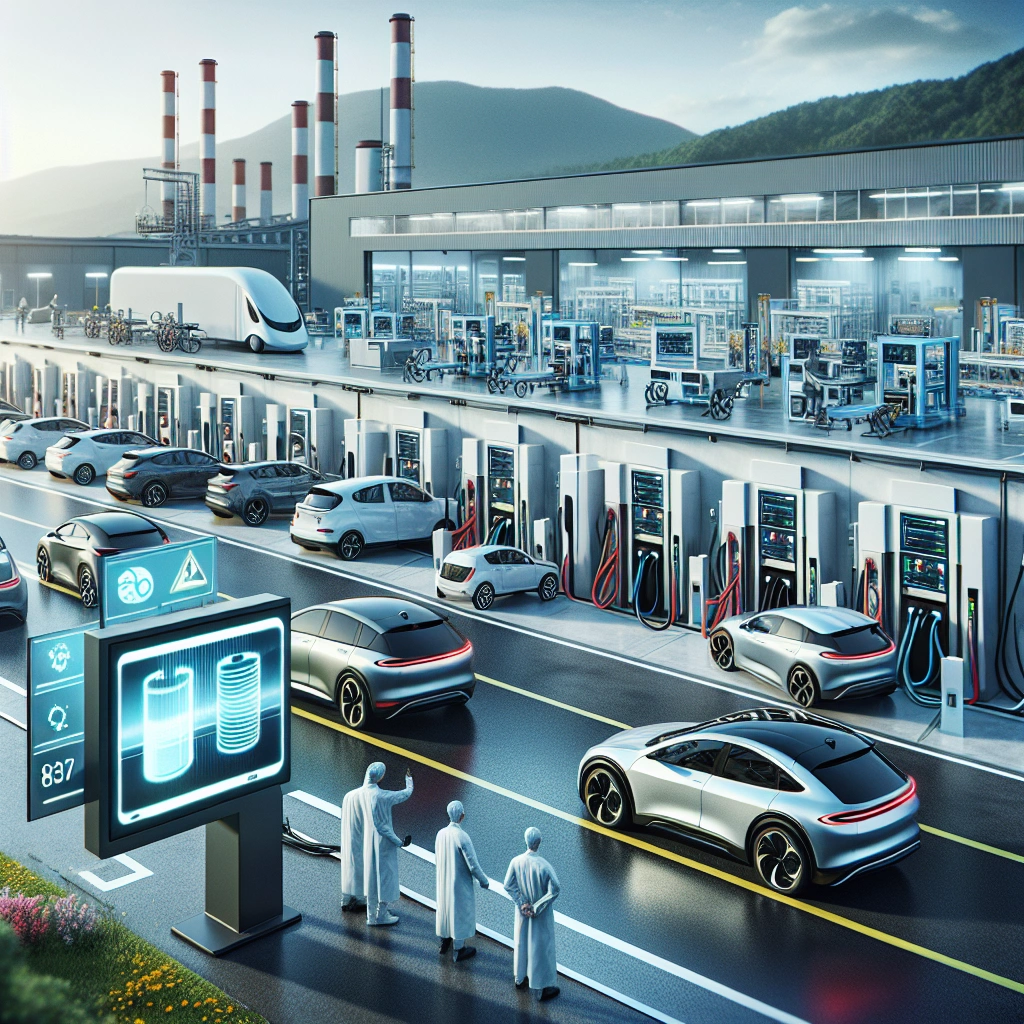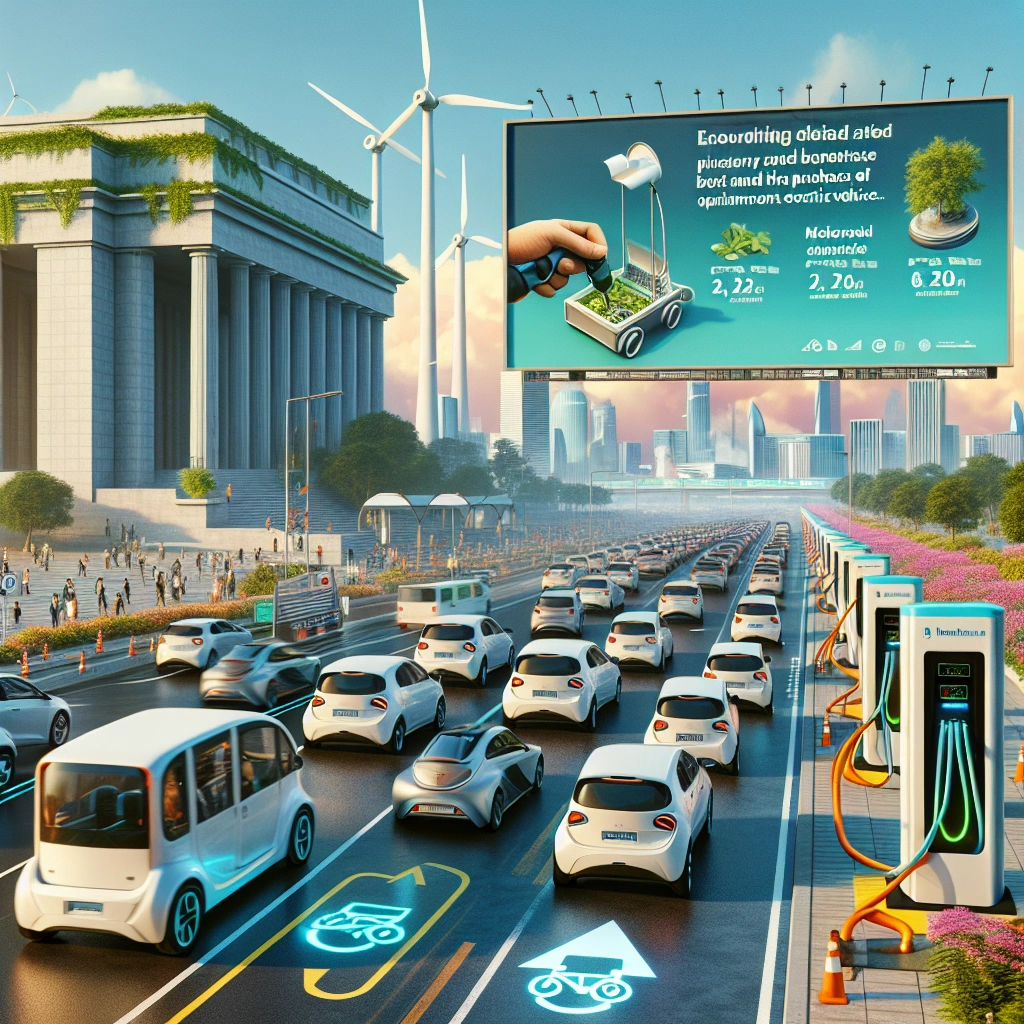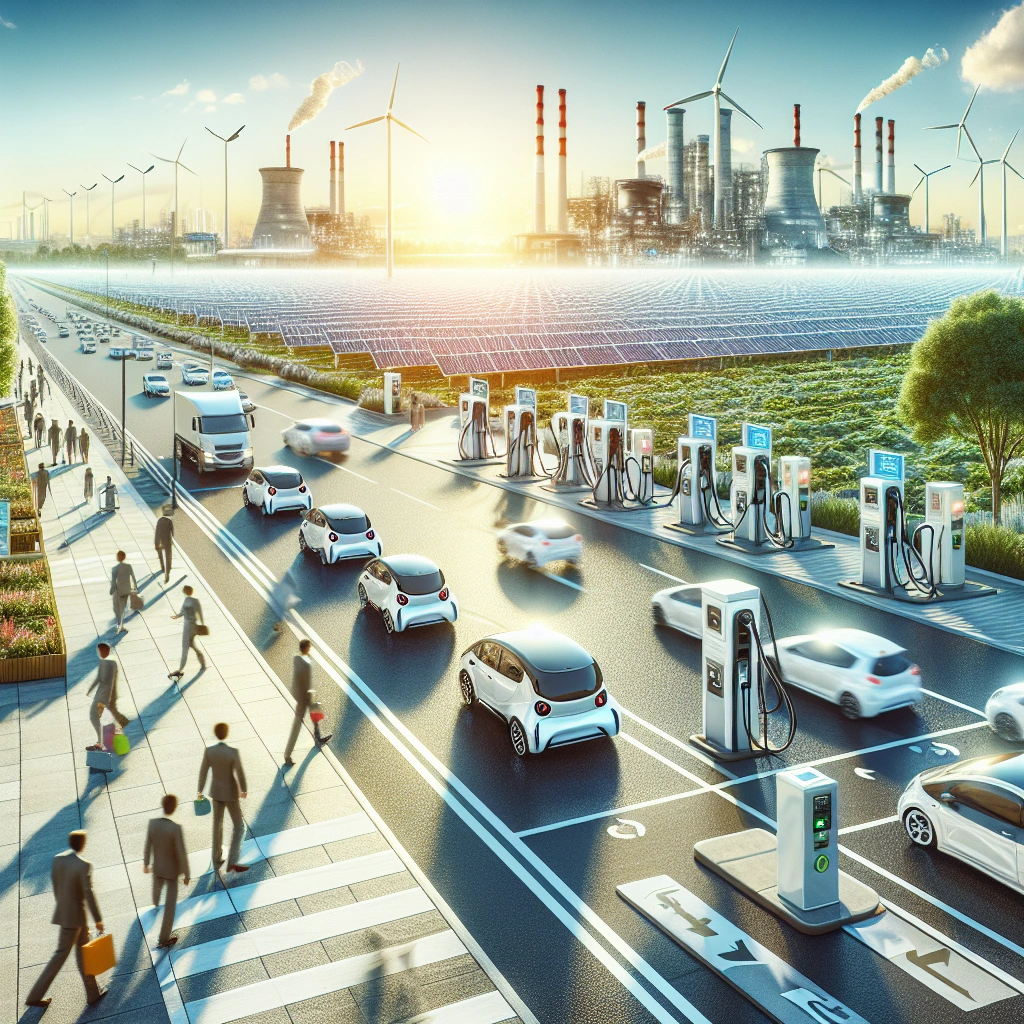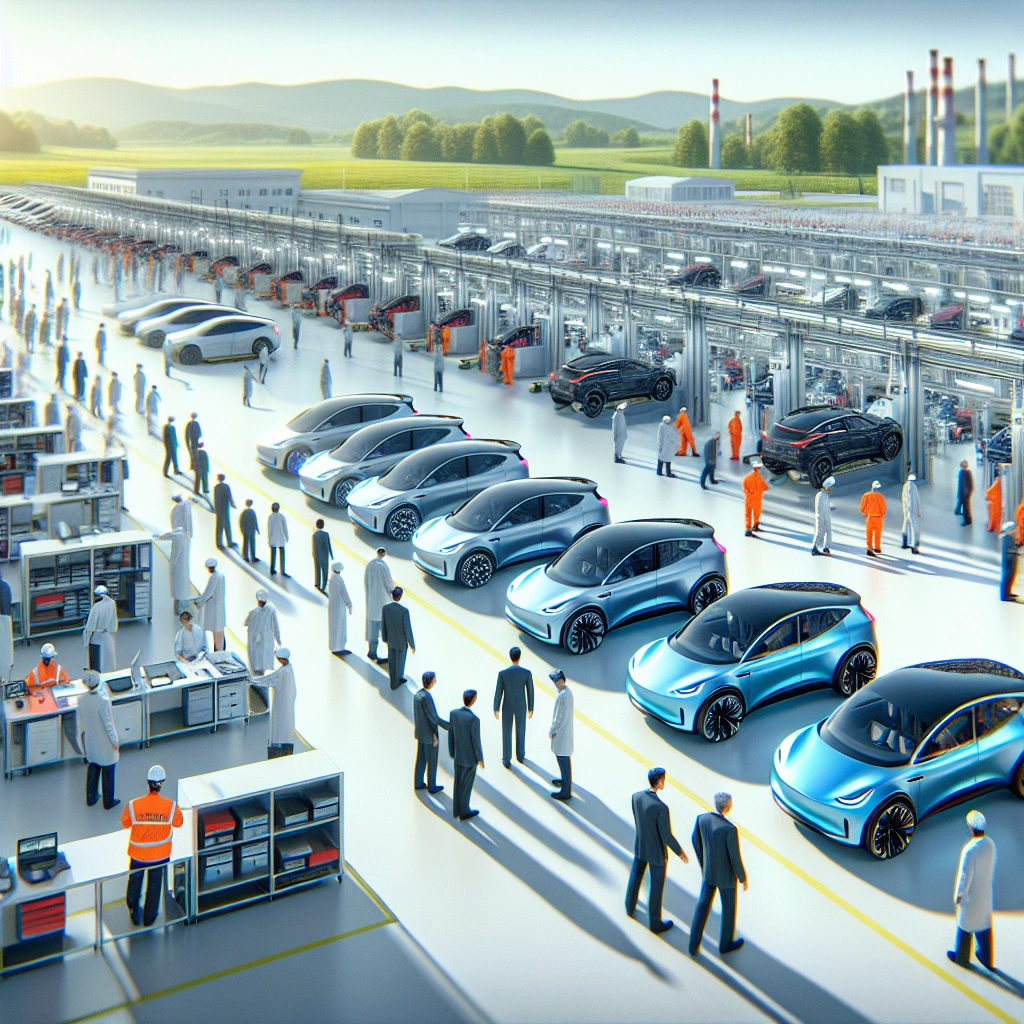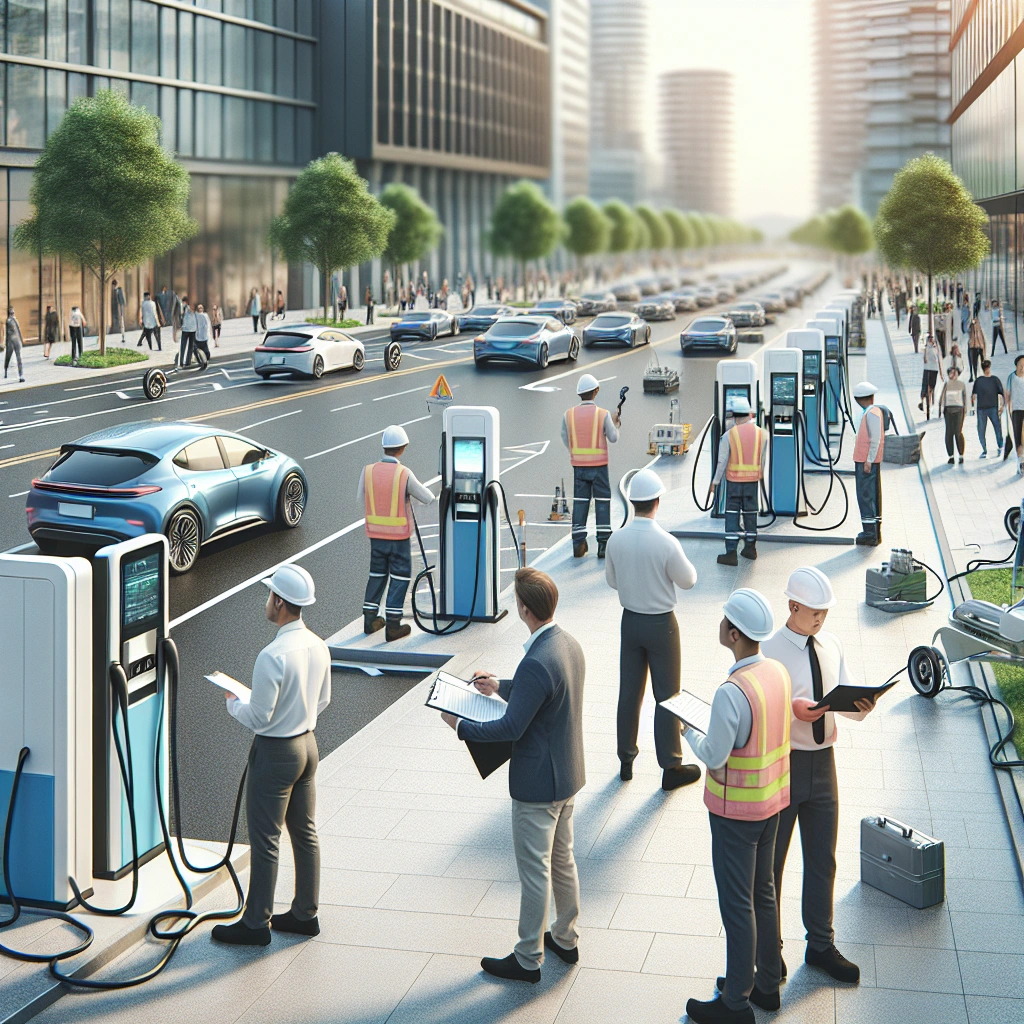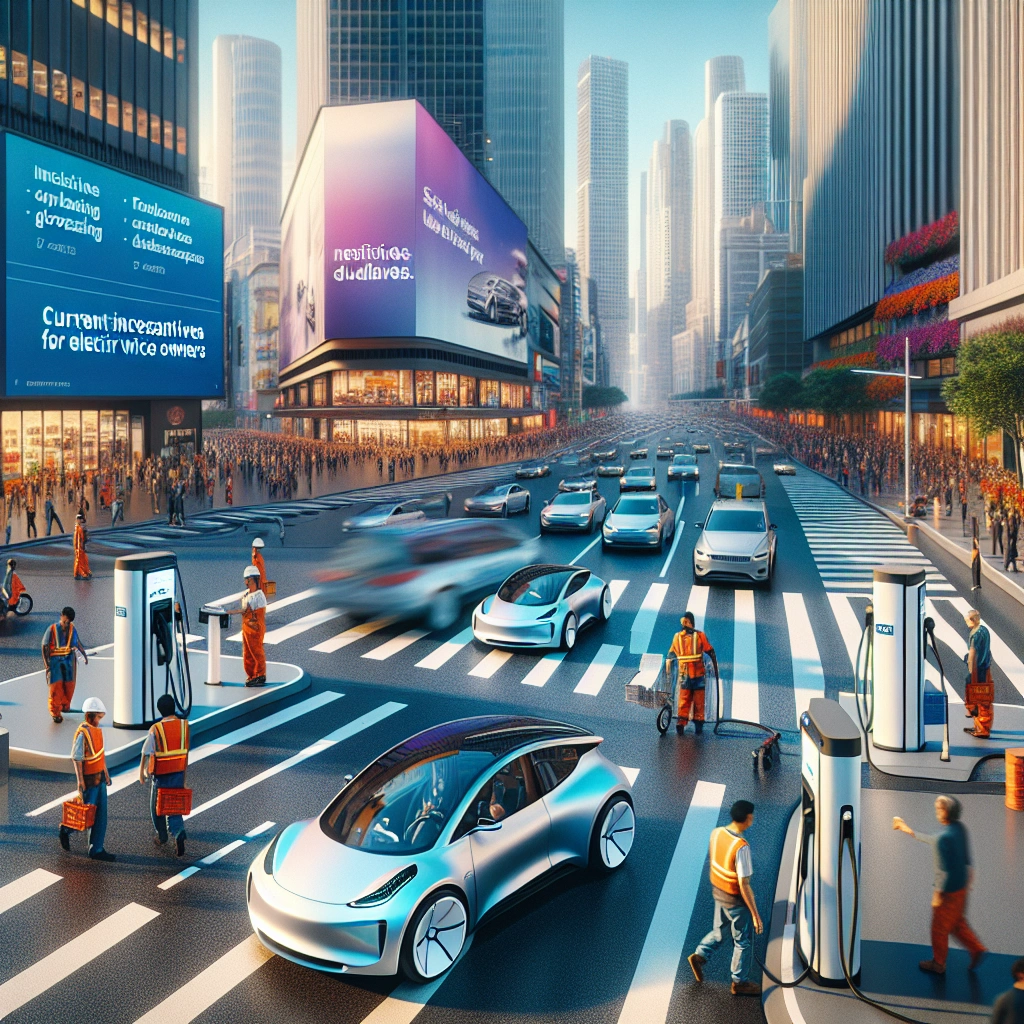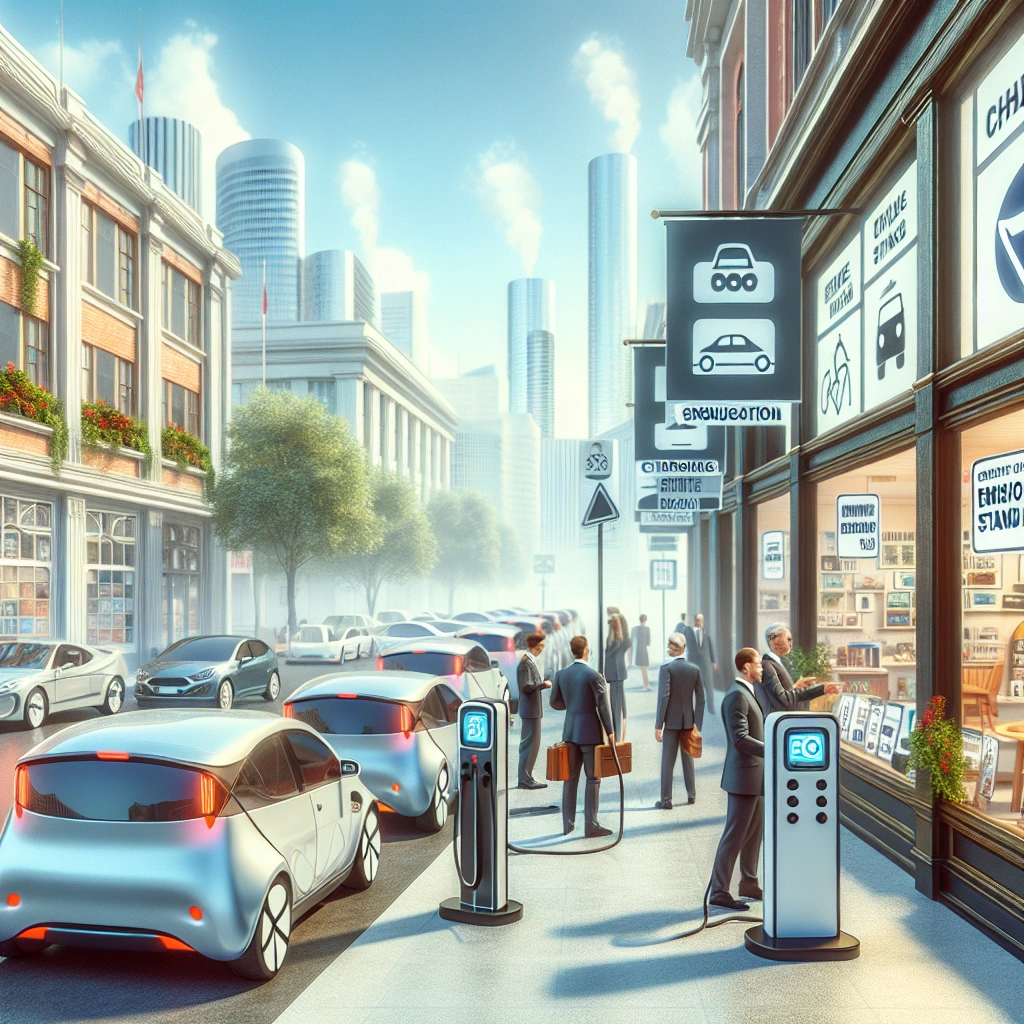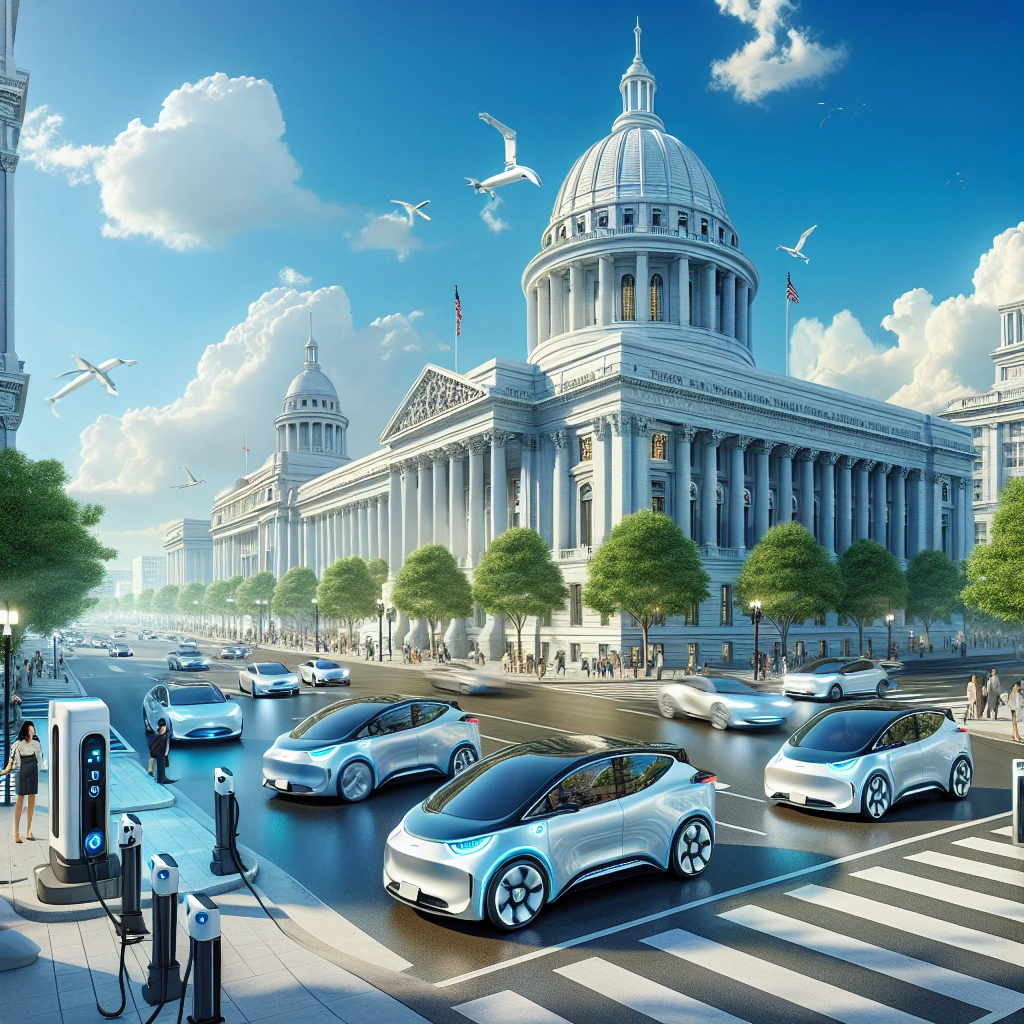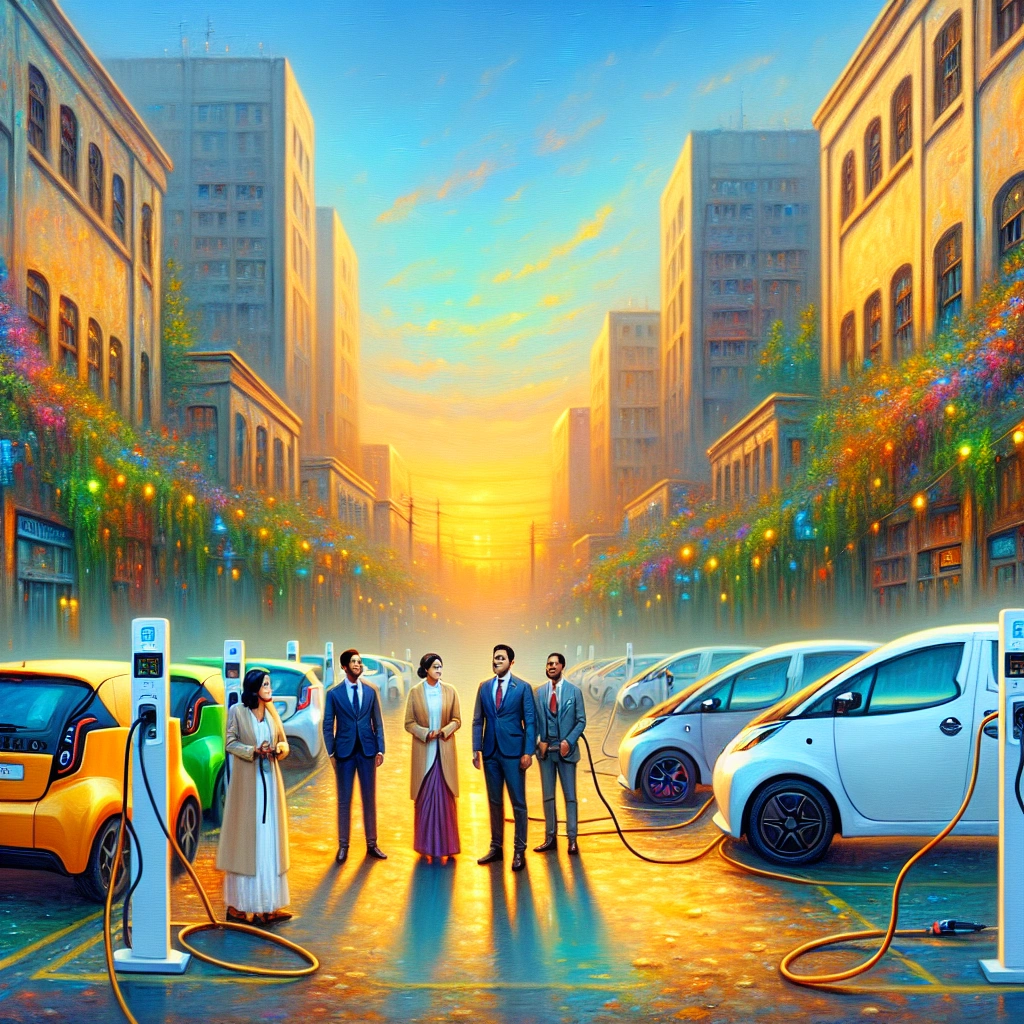Government Regulations For Electric Vehicles: A Primer


Government regulations for electric vehicles are crucial for ensuring safety standards, emission reductions, and infrastructure development. These regulations help to govern the design, construction, and performance of electric vehicles, ultimately impacting the overall growth and acceptance of electric mobility.
Currently, government regulations for electric vehicles involve establishing minimum safety standards, offering tax incentives, implementing fuel efficiency standards, and promoting the development of charging infrastructure. These regulations aim to make electric cars more affordable, increase consumer awareness, and reduce greenhouse gas emissions.
With the right policies in place, governments have the potential to significantly impact the adoption and success of electric vehicles.
Check out this Youtube video: Learn about the latest government regulations for electric vehicles and how they may impact the future of transportation.
The Evolution of Electric Vehicle Regulations
Early regulations for electric vehicles
The early regulations for electric vehicles were minimal, with little to no formal guidelines or standards in place for their operation and manufacturing.
Changes in regulations over time
Over time, there have been significant changes in regulations for electric vehicles, particularly with the introduction of government incentives and mandates to promote their adoption and decrease emissions.
Current Government Regulations for Electric Vehicles
Federal regulations in the United States
The federal government in the United States has implemented various regulations and incentives to promote the adoption of electric vehicles. These include tax credits for purchasing electric vehicles and grants for advanced energy research projects.
The Biden administration has also introduced new policies to fast-track investments in electric vehicle charging infrastructure as part of the bipartisan infrastructure law.
State-level regulations for electric vehicles
States across the USA have been actively exploring policies to support the adoption of electric vehicles. Many states have laws and incentives related to the use of electric vehicles, such as adopting California’s Zero Emission Vehicle (ZEV) and Low Emission Vehicle (LEV) program and standards.
Additionally, at least 47 states and the District of Columbia offer incentives to support the deployment of electric vehicles and alternative fuel vehicles through state legislation or private utility incentives within the state.
The Role of Government Incentives
Government incentives for electric vehicle purchases
Government incentives for electric vehicle purchases play a crucial role in driving consumer adoption of EVs. These incentives can come in various forms, such as tax credits, rebates, or subsidies, and are often offered at the federal, state, and local levels.
They aim to make electric vehicles more affordable and attractive, thereby encouraging individuals to opt for sustainable transportation options. By providing these incentives, the government aims to bolster the shift towards clean energy and reduce reliance on fossil fuels.
Tax credits and rebates for electric vehicle owners
Tax credits and rebates serve as powerful tools to incentivize the adoption of electric vehicles. For instance, the federal government offers tax credits of up to $7,500 for new EVs, and up to $4,000 for used EVs, subject to specific conditions.
These credits can significantly offset the initial purchase cost and make EVs more accessible to a broader consumer base. Additionally, some states and local authorities also provide further incentives, such as additional tax credits, rebates, or access to carpool lanes, contributing to the overall economic viability and appeal of electric vehicles.
Environmental Impact Considerations
Government regulations to reduce emissions from vehicles
The government has introduced stringent regulations to reduce emissions from vehicles, aiming to curb air pollution and combat climate change. These regulations include setting standards for greenhouse gas emissions, particularly targeting passenger cars and light trucks.
By imposing strict requirements on emission levels, the government aims to mitigate the environmental impact of vehicular emissions.
The role of electric vehicles in meeting environmental targets
Electric vehicles (EVs) play a crucial role in meeting environmental targets by significantly reducing harmful air pollution and greenhouse gas emissions. Compared to traditional gasoline or diesel vehicles, EVs operate without an internal combustion engine, thus minimizing the release of harmful emissions.
As a cleaner alternative, EVs contribute to combating climate change and promoting public health, aligning with global goals on climate change mitigation.
Safety Standards for Electric Vehicles
Government regulations for the safety of electric vehicles
The government has implemented stringent safety standards for electric vehicles to ensure the design, construction, performance, and operation meet specified requirements, enhancing public safety.
Crash testing requirements for electric vehicles
Electric vehicles are subjected to comprehensive crash tests, including full frontal collisions, various overlap collisions, and roof integrity evaluations, to assess occupant protection in different accident scenarios. Additionally, battery crash tests simulate realistic accidents to ascertain battery safety in deformed vehicle structures.
| Test Type | Purpose |
|---|---|
| Full frontal collision | Evaluate occupant protection during head-on collisions. |
| Various overlap collisions | Assess occupant safety in diverse collision situations. |
| Roof integrity tests | Determine the vehicle’s ability to protect occupants in incidents affecting the roof. |
| Battery crash test | Simulate real accidents to ascertain the safety of the vehicle’s batteries and occupants. |
Infrastructure Development and Government Regulations
Government regulations for electric vehicle charging stations
The government has set specific standards for electric vehicle (EV) charging stations, mandating non-proprietary and open-access payment methods. These standards ensure public accessibility and are aligned with designated FHWA Alternative Fuel Corridors.
Investment in charging infrastructure by government agencies
Government agencies are investing significantly in EV charging infrastructure, with the Bipartisan Infrastructure Law allocating $7.5 billion for this purpose. The goal is to establish a network of 500,000 public chargers compatible with all vehicles by 2030. The investment aims to facilitate data collection, ensure access, reliability, and long-term data sharing.
Economic Implications of Government Regulations
Impact of government regulations on the electric vehicle market
Government regulations play a crucial role in shaping the electric vehicle market. By setting standards for emissions, fuel efficiency, and safety, regulations steer the development and adoption of electric cars.
Additionally, initiatives like tax incentives and ZEV mandates directly impact the affordability and availability of electric vehicles.
Job creation and economic benefits of supporting electric vehicles
Supporting electric vehicles creates a ripple effect on job creation and economic growth. From manufacturing electric vehicles to building charging infrastructure and renewable energy sources, the transition to e-mobility could potentially create over 11 million jobs by 2050, offering a significant boost to the economy.
International Comparisons of Government Regulations
When it comes to government regulations for electric vehicles, countries around the world are taking various approaches to promote their adoption and usage. For example, the European Union, China, and Norway have been at the forefront of implementing regulations and incentives to encourage the adoption of electric vehicles.
These measures include tax credits, purchase subsidies, and mandates on vehicle emissions, creating an enabling environment for the transition to electric vehicles.
A comparative analysis of national policies for electric vehicles reveals the diversity of approaches taken by different countries. While some countries focus on competitive tenders and purchase subsidies for electric buses, others emphasize CO2 emissions regulations for cars and vans.
Additionally, there are variations in the promotion of electric vehicles among different countries, with market shares reaching as high as 23% in Norway, showcasing the effectiveness of their policies.
In terms of international best practices, countries like the United States and Canada offer tax credits for qualifying electric vehicles, while China has implemented the New Energy Vehicle (NEV) mandate and California has the Zero-Emission Vehicle (ZEV) mandate. These examples demonstrate the need for a comprehensive and integrated approach that encompasses regulations, incentives, and infrastructure development to accelerate the adoption of electric vehicles.
| Country | Key Regulations/Incentives |
|---|---|
| European Union | Tax credits, purchase subsidies |
| China | New Energy Vehicle (NEV) mandate |
| Norway | Zero-Emission Vehicle (ZEV) mandate |
| United States | Tax credits for qualifying electric vehicles |
| Canada | Tax credits for qualifying electric vehicles |
Understanding the international comparisons of government regulations for electric vehicles provides valuable insights into the diverse strategies employed to promote their deployment. By evaluating the best practices from different countries, policymakers can develop effective policies that accelerate the transition to electric mobility on a global scale.
Challenges and Limitations of Government Regulations
Potential drawbacks of government regulations for electric vehicles
- The potential drawbacks of government regulations for electric vehicles include hindering innovation by imposing strict standards that may stifle the development of new technologies and advancements in electric vehicle technology.
- Additionally, these regulations may lead to increased costs for manufacturers and consumers, ultimately impacting the affordability and accessibility of electric vehicles in the market.
Balancing regulatory requirements with industry innovation
- Balancing regulatory requirements with industry innovation presents a significant challenge. It requires finding a middle ground where regulations ensure safety, environmental protection, and consumer welfare, while still allowing for the advancement and growth of the electric vehicle industry.
- Striking this balance is crucial to avoid impeding innovation and limiting the potential of electric vehicles to revolutionize the automotive industry.
| Drawbacks of government regulations for electric vehicles | Balancing regulatory requirements with industry innovation |
|---|---|
| – Hindering innovation | – Finding a middle ground for regulations and innovation |
| – Increased costs for manufacturers and consumers | – Ensuring safety and consumer welfare while promoting industry growth |
The Future of Government Regulations for Electric Vehicles
The future of government regulations for electric vehicles looks promising, with a shift towards more stringent policies aimed at reducing emissions and promoting sustainable transportation solutions.
Predictions for the evolution of electric vehicle regulations
We can expect to see an increase in government incentives and mandates to drive the adoption of electric vehicles. This may include tax credits, rebates, and stricter emission standards to encourage both consumers and manufacturers to transition towards electric vehicles.
How government regulations may change with advancing technology
As technology continues to advance, government regulations are likely to adapt to accommodate new developments in electric vehicle technology. This could involve more comprehensive safety standards, improved charging infrastructure, and enhanced incentives for research and development in the electric vehicle sector.
| Predictions for the evolution of electric vehicle regulations | How government regulations may change with advancing technology |
|---|---|
| Increased government incentives and mandates | Adapting regulations to accommodate new electric vehicle technology |
| Tax credits, rebates, and stricter emission standards | Comprehensive safety standards and improved charging infrastructure |
Recommended Amazon Products for Government Regulations on Electric Vehicles
Here’s a curated list of products that can help you understand and comply with government regulations on electric vehicles, based on factors like functionality and popularity.
Product Recommendations
| Product Name | Description | Pros | Cons |
|---|---|---|---|
| ChargePoint Home Flex | This electric vehicle charger is Wi-Fi enabled and has a flexible amperage range, making it suitable for different power needs. | Versatile use | Professional installation may be required |
| BougeRV Level 2 EV Charger | A portable charger for electric vehicles that is weatherproof and has adjustable amperage settings. | Easy installation | Limited charging speed and power |
| Bosch EV600 Charging Station | A durable and reliable electric vehicle charging station with integrated cable management. | High charging power | Professional installation needed |
Top Recommended Product for Government Regulations on Electric Vehicles
If you’re looking for the best solution for complying with government regulations on electric vehicles, we highly recommend the ChargePoint Home Flex(https://www.amazon.com/s?k=ChargePoint+Home+Flex). This Wi-Fi enabled electric vehicle charger offers a flexible amperage range to suit different power needs. It is a popular and reliable choice for meeting government regulations and ensuring compliance.


Ready to equip yourself for government electric vehicle regulations? Check out the ChargePoint Home Flex(https://www.amazon.com/s?k=ChargePoint+Home+Flex) today for the best results!


Conclusion
The data presented clearly shows the alarming increase in pollution levels in urban areas. The findings indicate that urgent measures need to be taken to address this issue in order to protect the health of residents and the environment.
It is evident that further research and policies are necessary to mitigate the negative effects of pollution on society.
The impact of pollution on public health cannot be ignored, as it poses serious risks to individuals, especially those who are vulnerable such as children and the elderly. The evidence suggests that immediate action is required to reduce pollution levels and prevent further harm.
It is crucial for government and communities to work together in implementing effective solutions to combat pollution.
The study emphasizes the importance of raising awareness and promoting sustainable practices to minimize pollution. With the collaboration of government, industries, and the public, it is possible to create a healthier and cleaner environment for everyone.
It is critical for individuals to take responsibility for their actions and make conscious efforts to reduce pollution in their daily lives.


